Insights into the prognostic value and immunological role of CD74 in pan-cancer
- PMID: 38861249
- PMCID: PMC11166624
- DOI: 10.1007/s12672-024-01081-2
Insights into the prognostic value and immunological role of CD74 in pan-cancer
Abstract
Background: CD74 is a non-polymorphic type II transmembrane glycoprotein. It is involved in the regulation of T and B cell development, and dendritic cell (DC) motility. Numerous studies have found that CD74 exerts an essential role in tumor immunity, but the expression profile of CD74 is still not systematically reported, and its value in human pan-cancer analysis is unknown. In this study, we analyzed the expression pattern of CD74 in 33 cancers, and evaluated the significance of CD74 in prognosis prediction and cancer immunity.
Methods: Pan-cancer dataset from UCSC Xena.We used the Sangerbox website combined with R software' Timer, CIBERSORT method and IOBR package to analyze and plot the data. Survival was assessed using the Kaplan-Meier method and log-rank test for 33 cancer types (p < 0.05). In addition, to explore the relationship between CD74 expression and immune checkpoints, immune cell infiltration, tumor mutational burden (TMB) and microsatellite instability (MSI), Spearman correlation analysis was performed.
Results: This study comprehensively analyzed CD74 expression in 33 different tumor types, revealing that CD74 play an crucial role in cancer formation and development.
Conclusions: CD74 gene expression in different cancers is associated with immune cell infiltration and immunomodulators and may provide a promising target for survival and immunotherapy. Our study shows that CD74 has an essential role as a biomarker of prognosis during tumor development, which highlights the possibility of new targeted therapies.
Keywords: CD74; Immune microenvironment; Immunotherapy; Pan-cancer; Prognosis.
© 2024. The Author(s).
Conflict of interest statement
The authors have no competing interests to disclose.
Figures


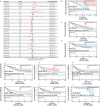
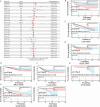

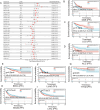
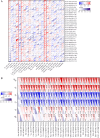
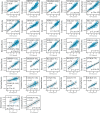
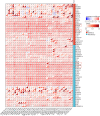

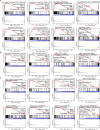
Similar articles
-
The Pan-Cancer Crosstalk Between the EFNA Family and Tumor Microenvironment for Prognosis and Immunotherapy of Gastric Cancer.Front Cell Dev Biol. 2022 Mar 2;10:790947. doi: 10.3389/fcell.2022.790947. eCollection 2022. Front Cell Dev Biol. 2022. PMID: 35309935 Free PMC article.
-
Pan-cancer analysis of the prognostic and immunological role of GJB2: a potential target for survival and immunotherapy.Front Oncol. 2023 Jun 23;13:1110207. doi: 10.3389/fonc.2023.1110207. eCollection 2023. Front Oncol. 2023. PMID: 37427102 Free PMC article. Review.
-
CD74 is a potential biomarker predicting the response to immune checkpoint blockade.Cancer Cell Int. 2024 Oct 14;24(1):340. doi: 10.1186/s12935-024-03524-w. Cancer Cell Int. 2024. PMID: 39402601 Free PMC article.
-
HHLA2 Used as a Potential Prognostic and Immunological Biomarker and Correlated with Tumor Microenvironment in Pan-Cancer.Biomed Res Int. 2022 Feb 23;2022:3924400. doi: 10.1155/2022/3924400. eCollection 2022. Biomed Res Int. 2022. Retraction in: Biomed Res Int. 2024 Mar 20;2024:9789013. doi: 10.1155/2024/9789013. PMID: 35252444 Free PMC article. Retracted.
-
A Pan-Cancer Analysis Reveals the Prognostic and Immunotherapeutic Value of Stanniocalcin-2 (STC2).Front Genet. 2022 Jul 22;13:927046. doi: 10.3389/fgene.2022.927046. eCollection 2022. Front Genet. 2022. PMID: 35937984 Free PMC article. Review.
References
Grants and funding
LinkOut - more resources
Full Text Sources
